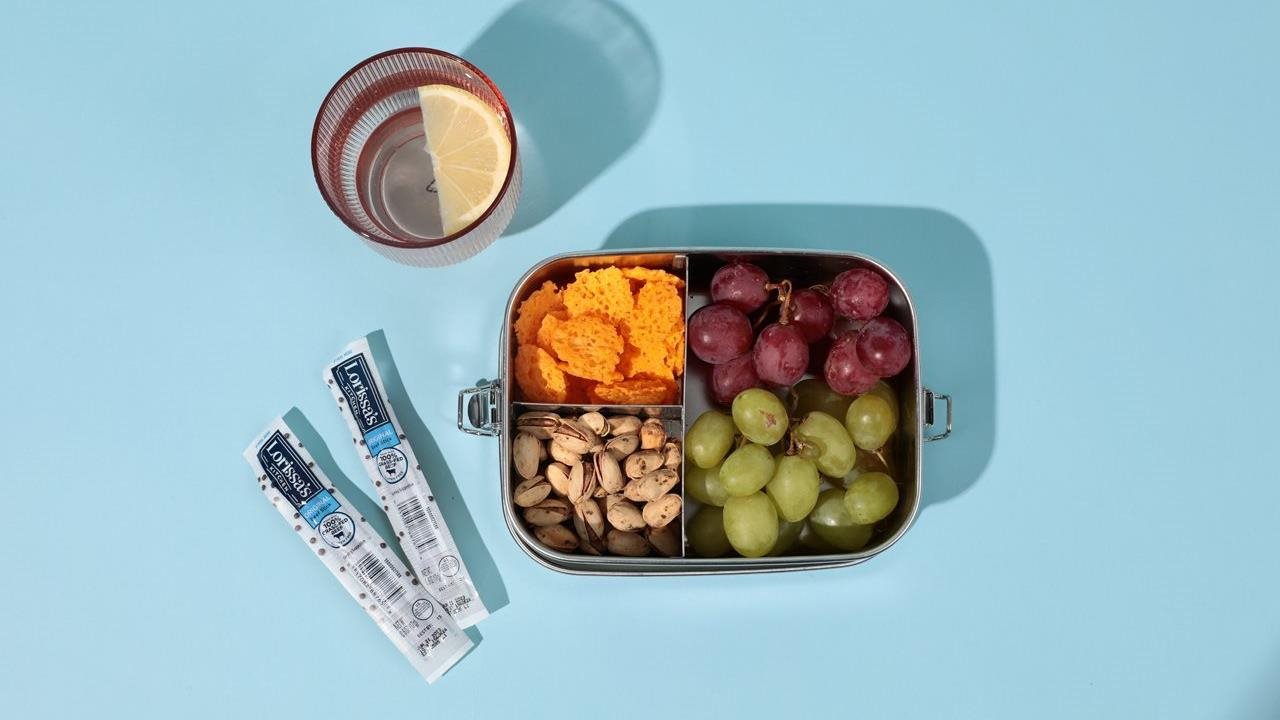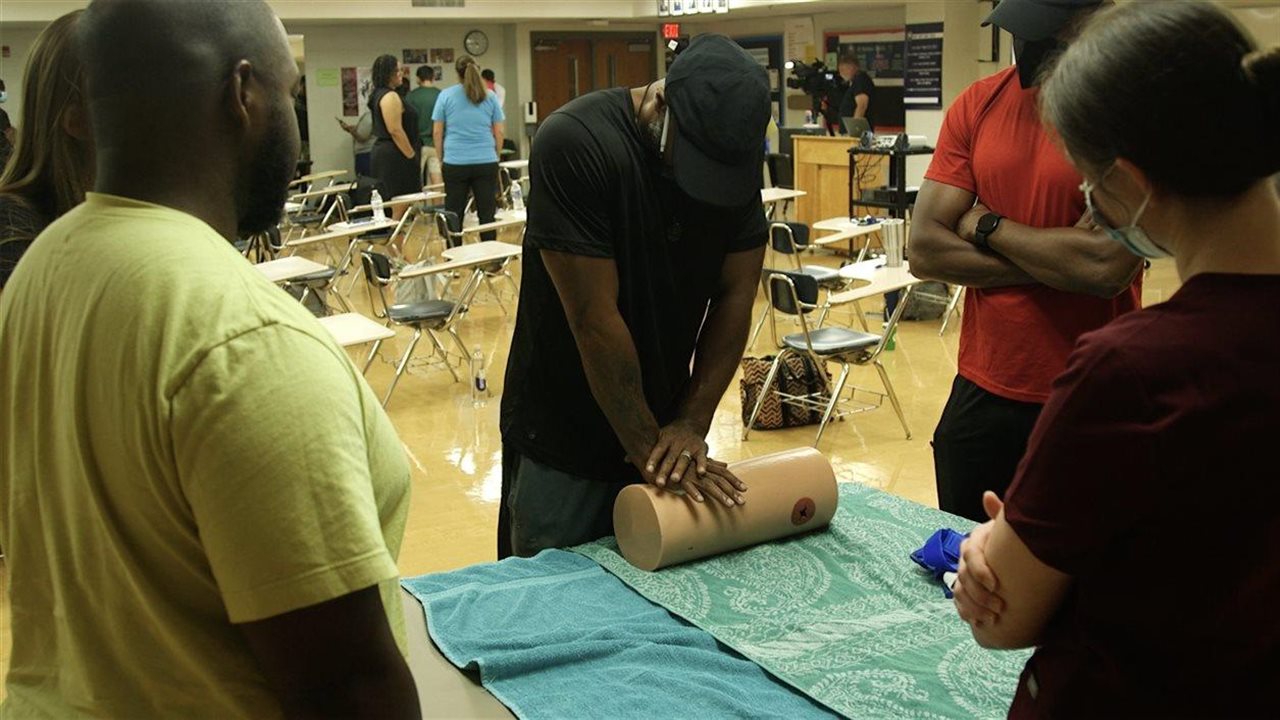2023-05-01T09:01:00
(BPT) – This content is sponsored by Mitsubishi Tanabe Pharma America, Inc. (MTPA) and is intended for U.S. audiences only. Debra is an actual patient who is taking RADICAVA® (edaravone).
The information provided here is general in nature and is not intended to be a substitute for professional medical advice, diagnosis, or treatment. You are strongly encouraged to seek the advice of your doctor or other qualified health care provider with any questions regarding a medical condition.
Individual results may vary. Please see Important Safety Information below, full Prescribing Information and Patient Information on Radicava.com.
Who I Am and How I Find Joy
I retired after working for 30 years in the medical field. I’m used to being the one everyone turns to for care, so having ALS and accepting help has been a real adjustment for me.
I try to focus on the important things beyond my ALS. One thing that brings me much joy is spending time with my new grandbaby. She’s 20 months old and being with her reminds me how precious every day on this earth really is.
My Journey to ALS Diagnosis
Around six months prior to being diagnosed, I’d lost 60 pounds and couldn’t swallow. My doctor in Nashville did a scope to see what the diagnosis could be. After the scope she woke me right up and said, “Debra, I think it’s ALS.” So, mentally I prepared myself to hear the news as best as I could — but I don’t think you can truly be ready for that kind of diagnosis.
My husband was with me the day I was diagnosed, and he asked the physician “What can we do?” The physician told him “You just need to take her home and enjoy every minute.” My husband is very supportive, and my family has been right there with me at every step.
Learning How to “Embrace My Now” and Live My Life with ALS
I have Bulbar ALS, so my speech is affected, which I sometimes feel insecure about. But that doesn’t stop me from living my life and doing the things that make me happy. I “Embrace My Now” by enjoying being outside, tending to the garden, and planting new seeds. Today, I’m lucky that I’m still able to drive and do everything I need to do.
Thankfully, I get a lot of support from important people in my life, like the nurse practitioner I see for my ALS care. She’s somebody who really listens, and I’m so happy with the help she gives me. And after my diagnosis, my sister and I have become very close. She’s my go-to person who listens when I need to talk, and she’s been a huge source of support. She’s my ride-or-die partner.
How I Chose to Focus on Fighting
I went back to work the day after I was diagnosed and didn’t really accept that I had ALS. But being in the medical field for over 30 years helped me research the disease and options available. It was then that I chose to fight every day and not quit. Everybody’s journey is different, but I decided to get up every day and keep going.
How I Found RADICAVA® and Started on RADICAVA ORS® (edaravone)
In my research about ALS treatments, I found out about RADICAVA®. I spoke to my doctor about wanting to try it, and she agreed it would be a good option for me, so I began taking Radicava® IV infusions in 2019.
Talk to your doctor to see if RADICAVA® is right for you.
I kept up with the latest research and knew when the oral form — RADICAVA ORS® — got approved. I was very excited by the news, so I contacted my doctor and asked her if I was a candidate to switch. She said yes, and I recently started RADICAVA ORS®.
RADICAVA ORS® really fits into my life’s routines. I’d encourage people with ALS to talk with their doctor about RADICAVA®.
Want to learn more about RADICAVA® Watch the How RADICAVA® May Help video at HowRadicavaMayHelp.com.
Individual results may vary. RADICAVA® is shown to slow the loss of physical function as measured by the ALS Functional Rating Scale-Revised (ALSFRS-R).
Talk to your doctor about all the benefits and risks associated with treatment.
RADICAVA IV and RADICAVA ORS are indicated for the treatment of amyotrophic lateral sclerosis (ALS).
Do not receive RADICAVA (edaravone) IV or RADICAVA ORS (edaravone) if you are allergic to edaravone or any of the ingredients in RADICAVA IV and RADICAVA ORS.
Please See Important Safety Information below and full Prescribing Information and Patient Information on RADICAVA.com.
My Experience with RADICAVA ORS®
Knowing that a lot of people with ALS already use RADICAVA® made me feel more comfortable to start treatment. My doctor tells me how much RADICAVA ORS® to take and how often to take it. I follow the same schedule I did with infusions — 10 days on and then off for 2 weeks. With the oral treatment, I don’t have to sit and wait for an infusion to go in, so I think it’s a lot more comfortable for me. I also like that it shakes up well and is convenient for me to take at home. If I could sum up the experience of switching from RADICAVA® IV to RADICAVA ORS®, it would be streamlined administration.
I make sure to follow these instructions my doctor told me:
- Take RADICAVA ORS® first thing every morning after fasting overnight
- Wait at least 1 hour after taking it before eating or drinking anything except water
- RADICAVA ORS® should be stored upright at room temperature between 68°F-77°F and protected from light
- Read the Instructions for Use before you take RADICAVA ORS®
My Advice to Others Living with ALS
Talk to your doctor or healthcare professional about what options are available to you. Everybody’s journey is different with ALS, and everybody progresses at different levels. I don’t know any other people that have ALS, so hearing others’ stories was really helpful for me to not feel so alone. I wanted to share my story because I know it will help people like me who need to hear others’ experiences.
If you want to hear more from me, you can watch my video at DebraALSStory.com.
Sharing My Story
When I was diagnosed with ALS, I was lucky to have people in my personal life, like my sister and husband, that I could talk to about my thoughts and feelings. I’m grateful for their support but hearing from others living with ALS about their treatment experience through the Share Your Story program has been comforting. The Share Your Story program allows real people living with ALS and/or their caregivers to share their own experiences of living with ALS and why treatment with RADICAVA® or RADICAVA ORS® matters to them.
Interested in sharing your story about ALS and RADICAVA®? Learn more about participating in the Share Your Story program at ShareYourALSStory.com.
IMPORTANT SAFETY INFORMATION
Do not receive RADICAVA (edaravone) or RADICAVA ORS (edaravone) if you are allergic to edaravone or any of the ingredients in RADICAVA and RADICAVA ORS.
Before you take RADICAVA or RADICAVA ORS, tell your healthcare provider about all of your medical conditions, including if you:
- have asthma.
- are allergic to other medicines.
- are pregnant or plan to become pregnant. It is not known if RADICAVA or RADICAVA ORS will harm your unborn baby.
- are breastfeeding or plan to breastfeed. It is not known if RADICAVA or RADICAVA ORS passes into your breastmilk. You and your healthcare provider should decide if you will receive RADICAVA or RADICAVA ORS or breastfeed.
Tell your healthcare provider about all the medicines you take, including prescription and over-the-counter medicines, vitamins, and herbal supplements.
What are the possible side effects of RADICAVA and RADICAVA ORS?
RADICAVA and RADICAVA ORS may cause serious side effects, including hypersensitivity (allergic) reactions and sulfite allergic reactions.
- Hypersensitivity reactions have happened in people receiving RADICAVA or taking RADICAVA ORS and can happen after your medicine has been given.
- RADICAVA and RADICAVA ORS contain sodium bisulfite, a sulfite that may cause a type of allergic reaction that can be serious and life-threatening. Sodium bisulfite can also cause less severe asthma episodes in certain people. Sulfite sensitivity can happen more often in people who have asthma than in people who do not have asthma.
- Tell your healthcare provider right away or go to the nearest emergency room if you have any of the following symptoms: hives; swelling of the lips, tongue, or face; fainting; breathing problems; wheezing; trouble swallowing; dizziness; itching; or an asthma attack (in people with asthma).
Your healthcare provider will monitor you during treatment to watch for signs and symptoms of all the serious side effects and allergic reactions.
The most common side effects include bruising (contusion), problems walking (gait disturbance), and headache.
These are not all the possible side effects of RADICAVA or RADICAVA ORS. Call your doctor for medical advice about side effects. You may report side effects to FDA at 1-800-FDA-1088. You may also report side effects to www.fda.gov/medwatch or Mitsubishi Tanabe Pharma America, Inc. at 1-888-292-0058.
INDICATION
RADICAVA and RADICAVA ORS are indicated for the treatment of amyotrophic lateral sclerosis (ALS).
For more information, including full Prescribing Information, please visit www.RADICAVA.com.
RADICAVA® and RADICAVA ORS® are registered trademarks of Mitsubishi Tanabe Pharma Corporation.
© 2023 Mitsubishi Tanabe Pharma America, Inc. All rights reserved.
CP-OE-US-0494 4/23










